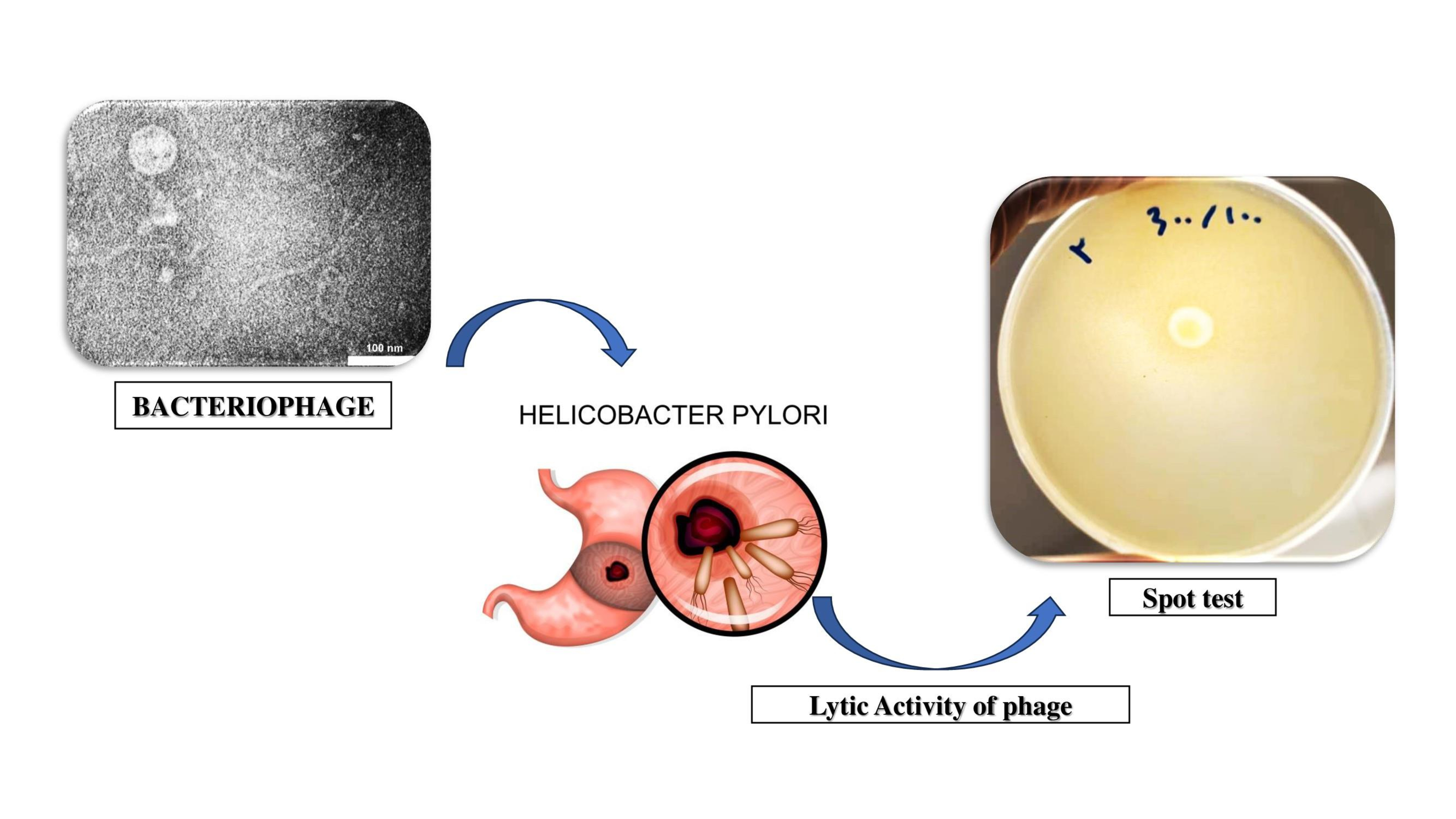Volume 35, Issue 247 (8-2025)
J Mazandaran Univ Med Sci 2025, 35(247): 40-48 |
Back to browse issues page
Download citation:
BibTeX | RIS | EndNote | Medlars | ProCite | Reference Manager | RefWorks
Send citation to:



BibTeX | RIS | EndNote | Medlars | ProCite | Reference Manager | RefWorks
Send citation to:
Rahimzadeh G, Rezai M S, Samadi N, Jamalifar, Fazeli M R. Isolation and Characterization of a Helicobacter pylori Bacteriophage from a Sewage Sample at a Tertiary Hospital in Northern Iran. J Mazandaran Univ Med Sci 2025; 35 (247) :40-48
URL: http://jmums.mazums.ac.ir/article-1-21783-en.html
URL: http://jmums.mazums.ac.ir/article-1-21783-en.html
Abstract: (74 Views)
Background and purpose: Helicobacter pylori is a Gram-negative, microaerophilic, and spiral-shaped bacterium recognized as a major causative agent of gastrointestinal diseases such as chronic gastritis, peptic ulcers, and gastric cancer. The high prevalence of this infection, particularly in developing countries, combined with the increasing antibiotic resistance of the bacterium, has significantly reduced the effectiveness of current treatment protocols. In this regard, bacteriophages, viruses that specifically target bacteria, have emerged as a promising, targeted, and safe alternative for the treatment of resistant infections. Accordingly, this study was designed to isolate and characterize a lytic bacteriophage with efficacy against H. pylori.
Materials and methods: In this experimental study, a wastewater sample was collected from Bou Ali Sina Hospital (Mazandaran Province, Iran). Following phage isolation, the bacteriophage was identified, and its lytic activity was evaluated using the spot test method. Phage titer was determined by the double-layer agar (DLA) assay. The morphology of the phage was observed and classified using transmission electron microscopy (TEM). In addition, phage stability was assessed under various temperature conditions (4 C, 25 C, 37°C, and 55 C) and pH ranges (3–9).
Results: A phage belonging to the Podoviridae family was isolated, with a titer of 10⁶ PFU/mL. The phage structure included an icosahedral head and a short, non-contractile tail. The spot test confirmed strong lytic activity. The phage exhibited the highest stability and lytic activity at 37 C and pH 5.
Conclusion: Given its effective lytic activity and favorable stability under physiological conditions, the isolated phage demonstrates significant potential for development as a phage therapy agent targeting H. pylori infections. This approach could serve as a promising strategy for combating antibiotic resistance in the future.
Materials and methods: In this experimental study, a wastewater sample was collected from Bou Ali Sina Hospital (Mazandaran Province, Iran). Following phage isolation, the bacteriophage was identified, and its lytic activity was evaluated using the spot test method. Phage titer was determined by the double-layer agar (DLA) assay. The morphology of the phage was observed and classified using transmission electron microscopy (TEM). In addition, phage stability was assessed under various temperature conditions (4 C, 25 C, 37°C, and 55 C) and pH ranges (3–9).
Results: A phage belonging to the Podoviridae family was isolated, with a titer of 10⁶ PFU/mL. The phage structure included an icosahedral head and a short, non-contractile tail. The spot test confirmed strong lytic activity. The phage exhibited the highest stability and lytic activity at 37 C and pH 5.
Conclusion: Given its effective lytic activity and favorable stability under physiological conditions, the isolated phage demonstrates significant potential for development as a phage therapy agent targeting H. pylori infections. This approach could serve as a promising strategy for combating antibiotic resistance in the future.
Type of Study: Research(Original) |
Subject:
Microbiology
| Rights and permissions | |
 |
This work is licensed under a Creative Commons Attribution-NonCommercial 4.0 International License. |







